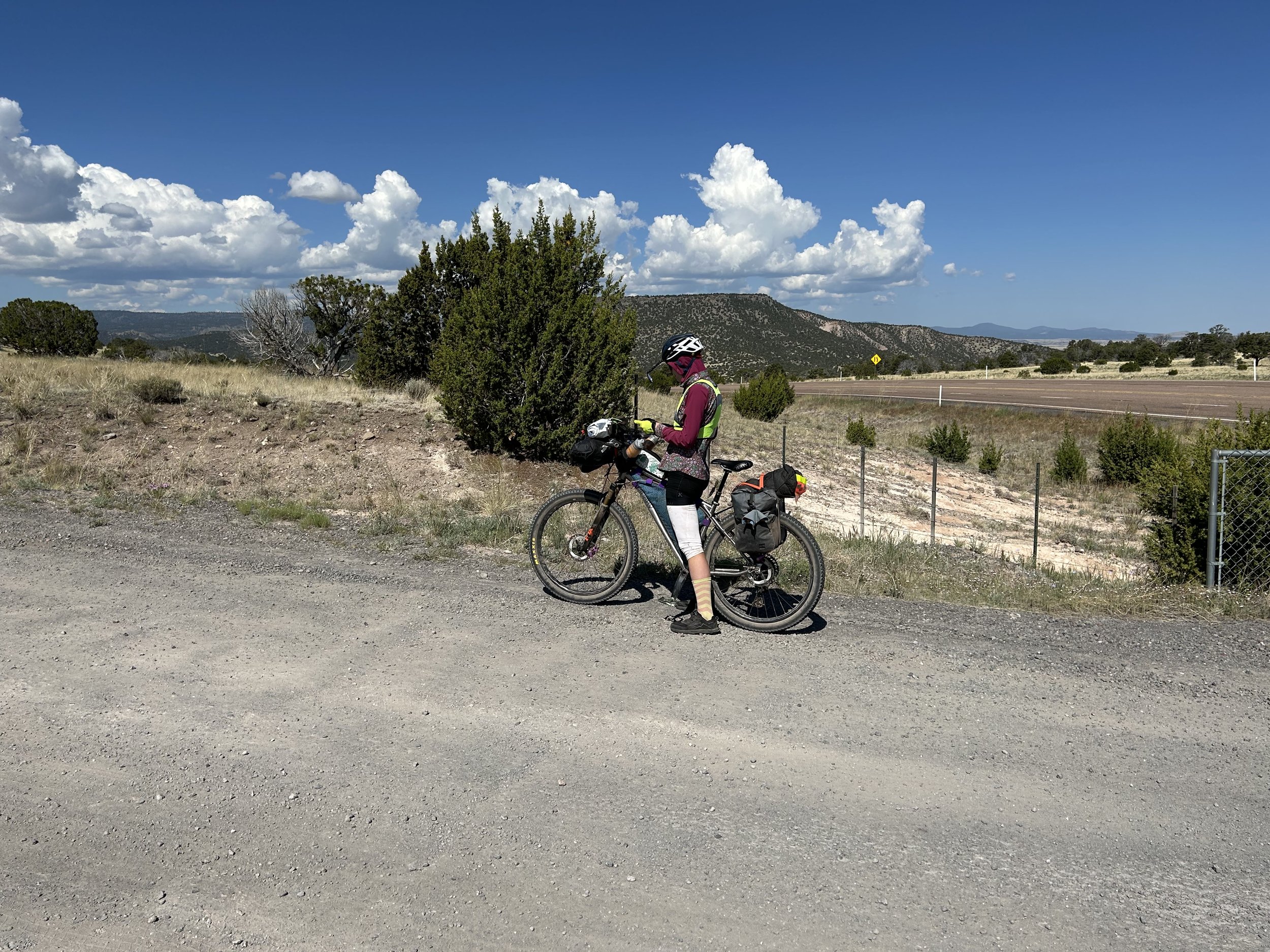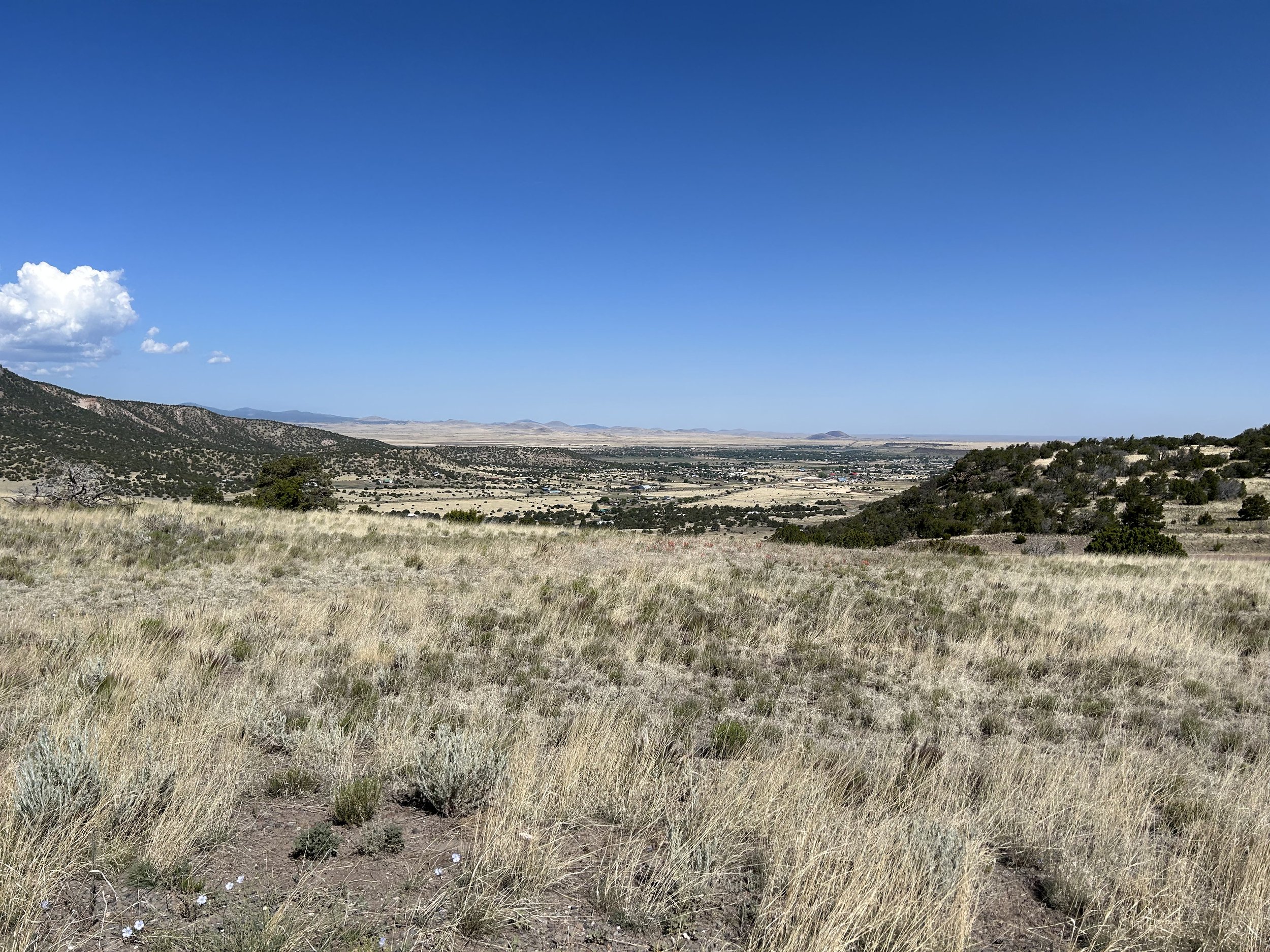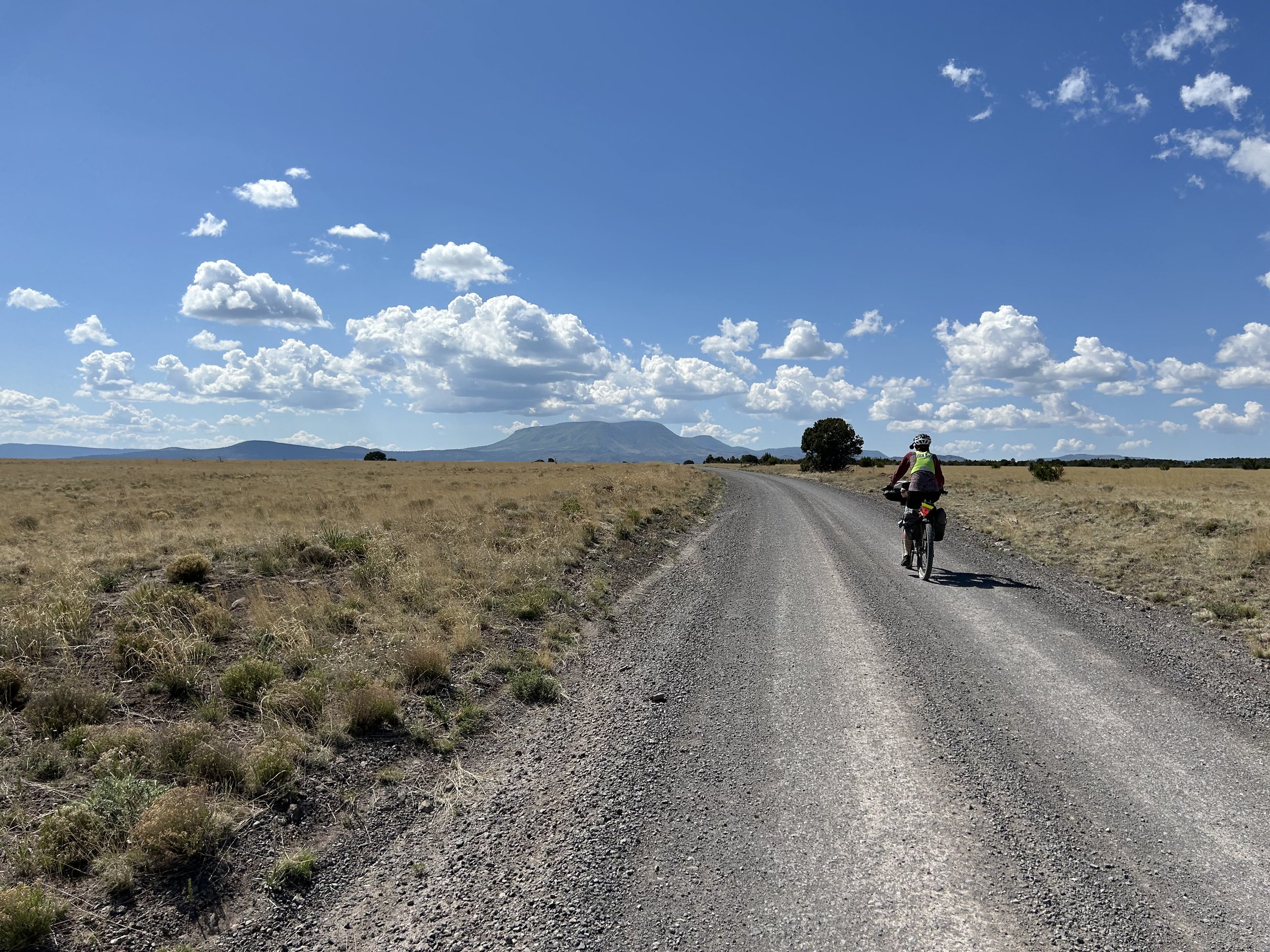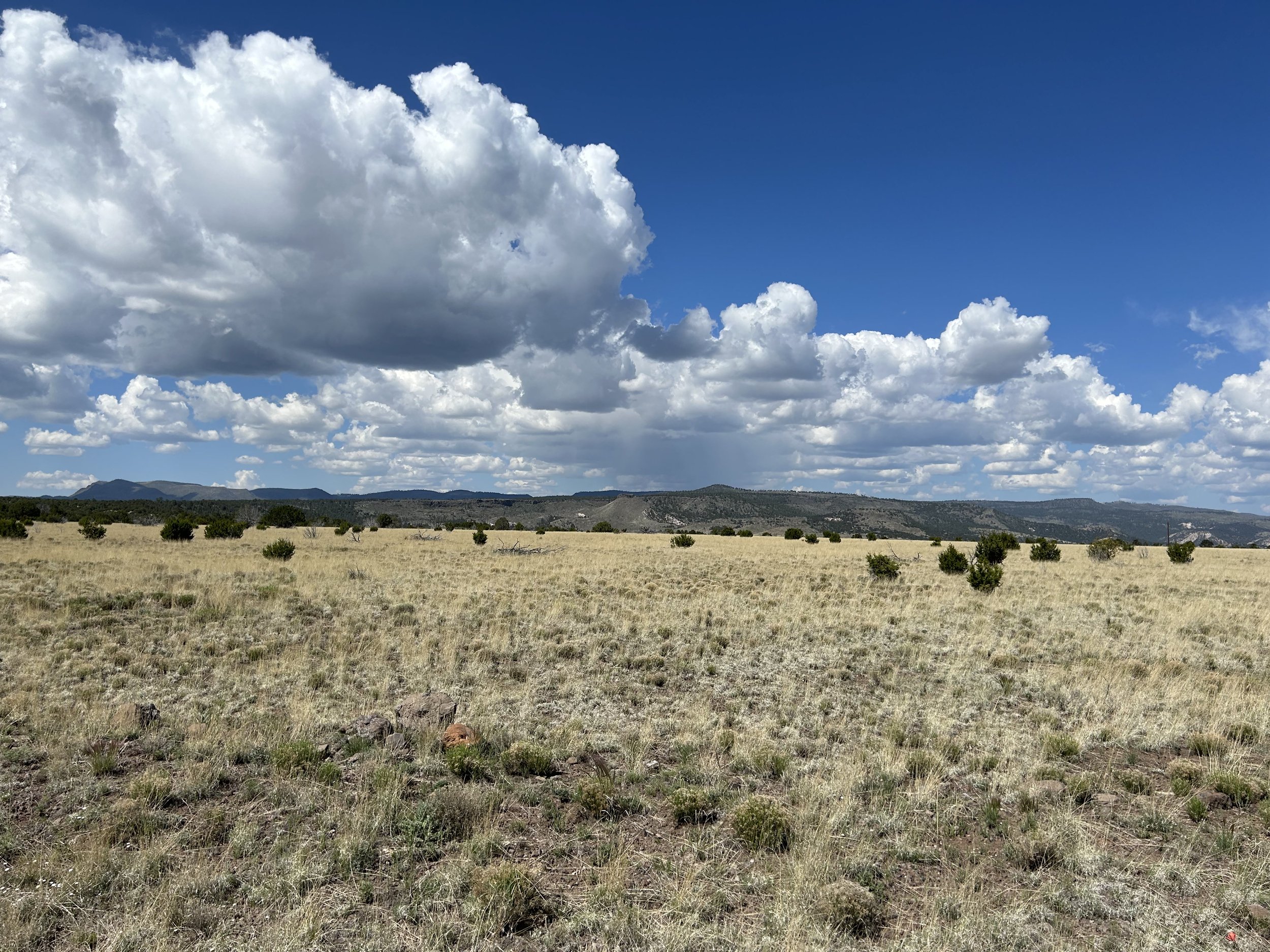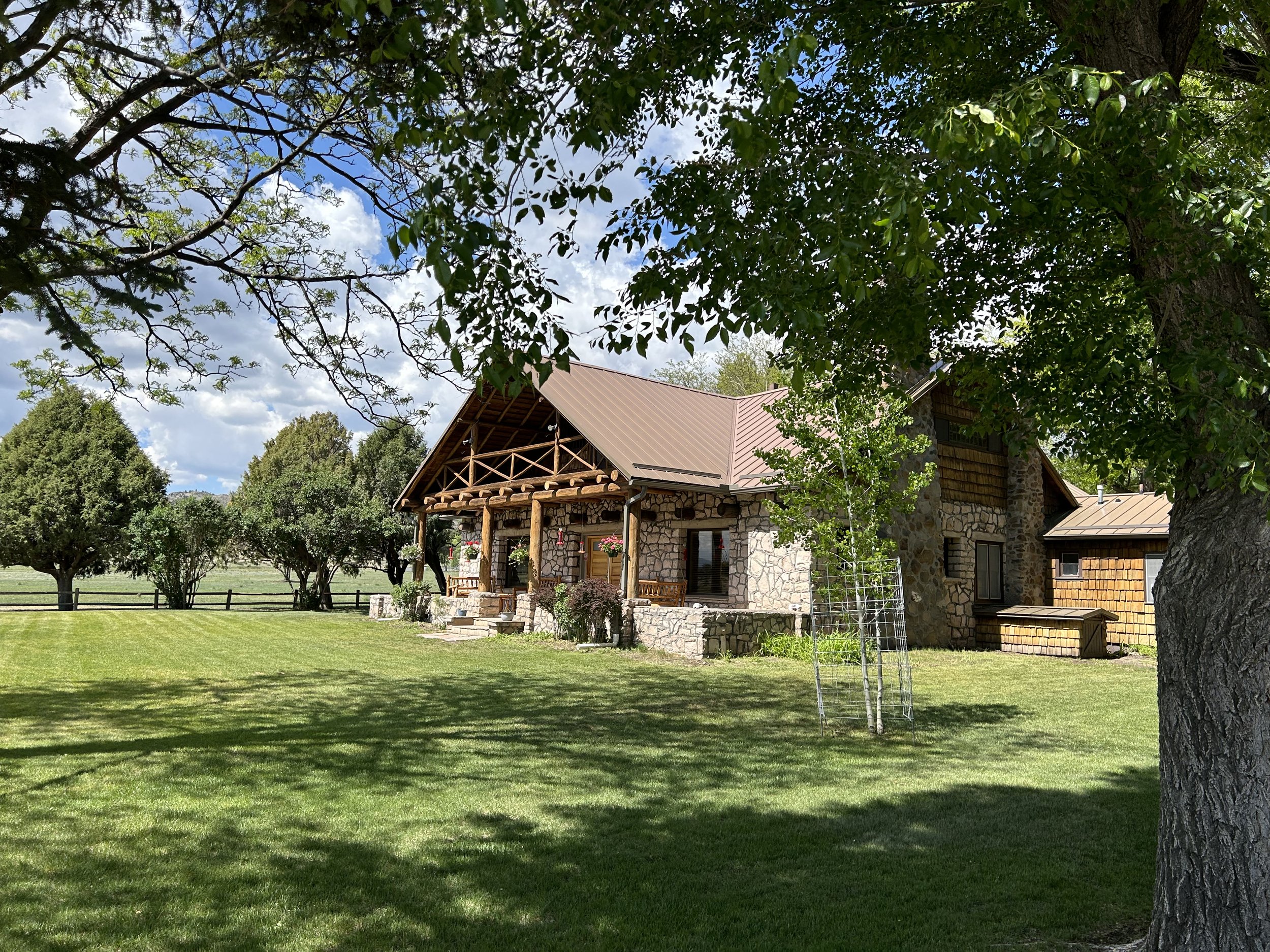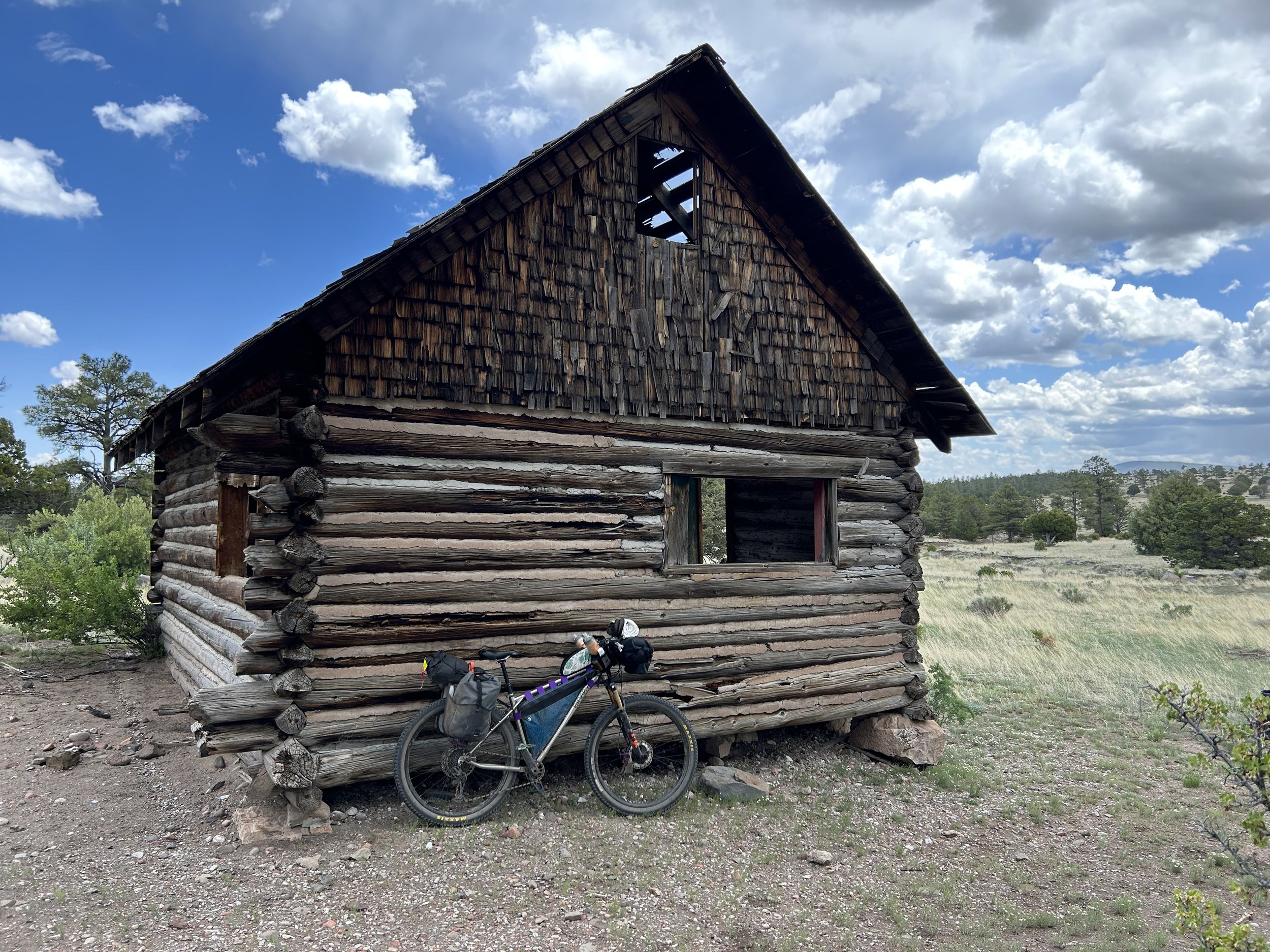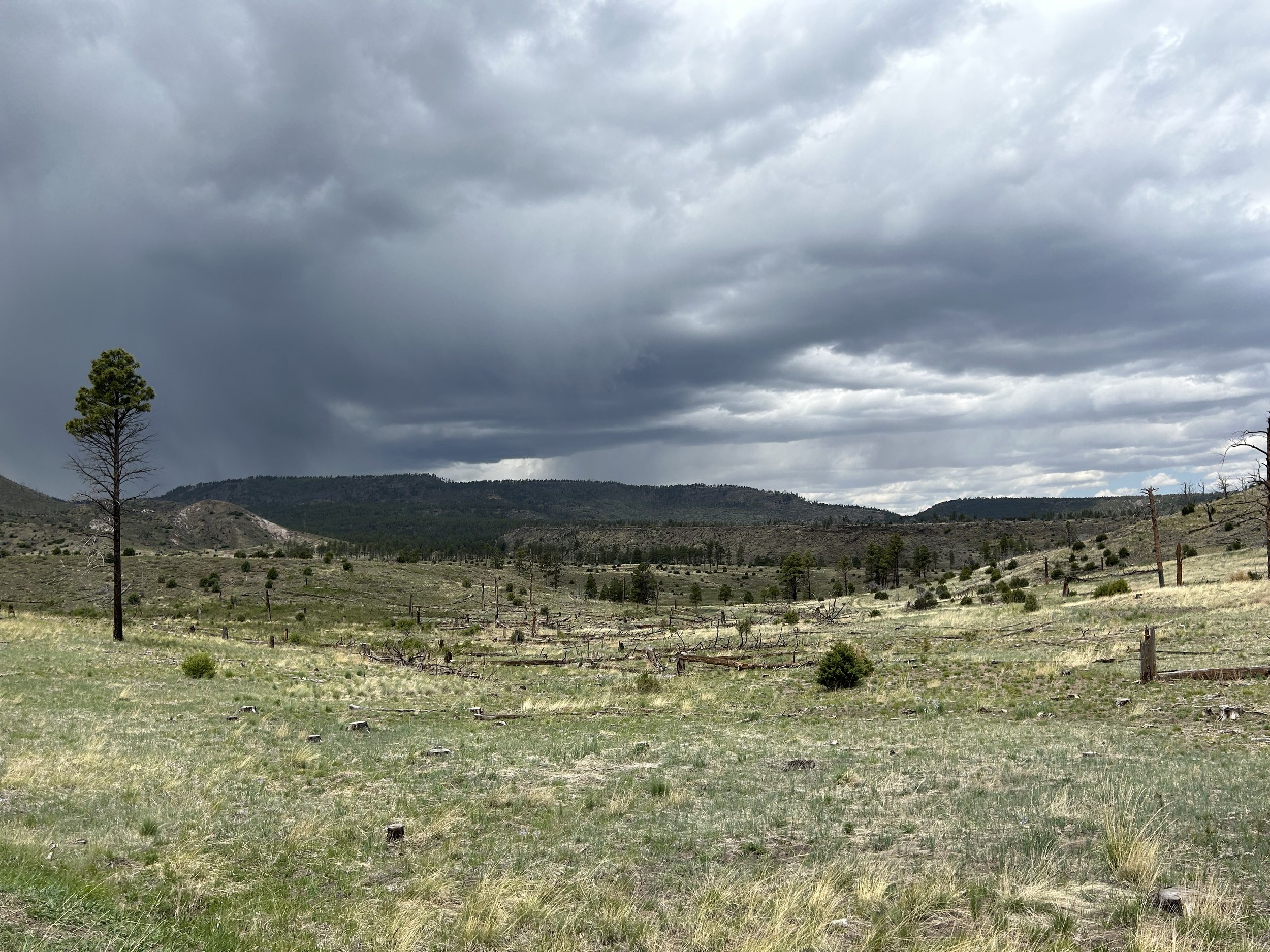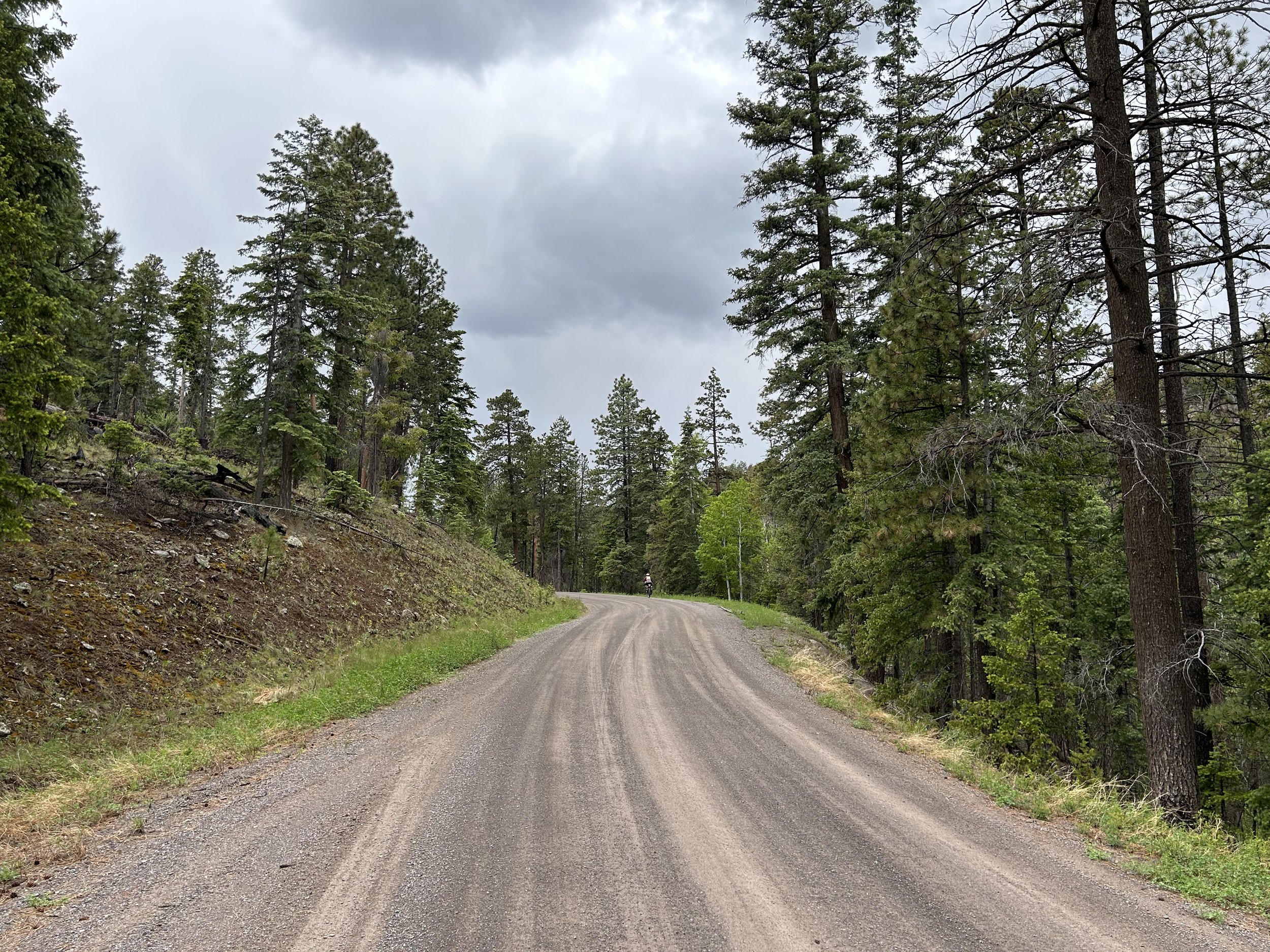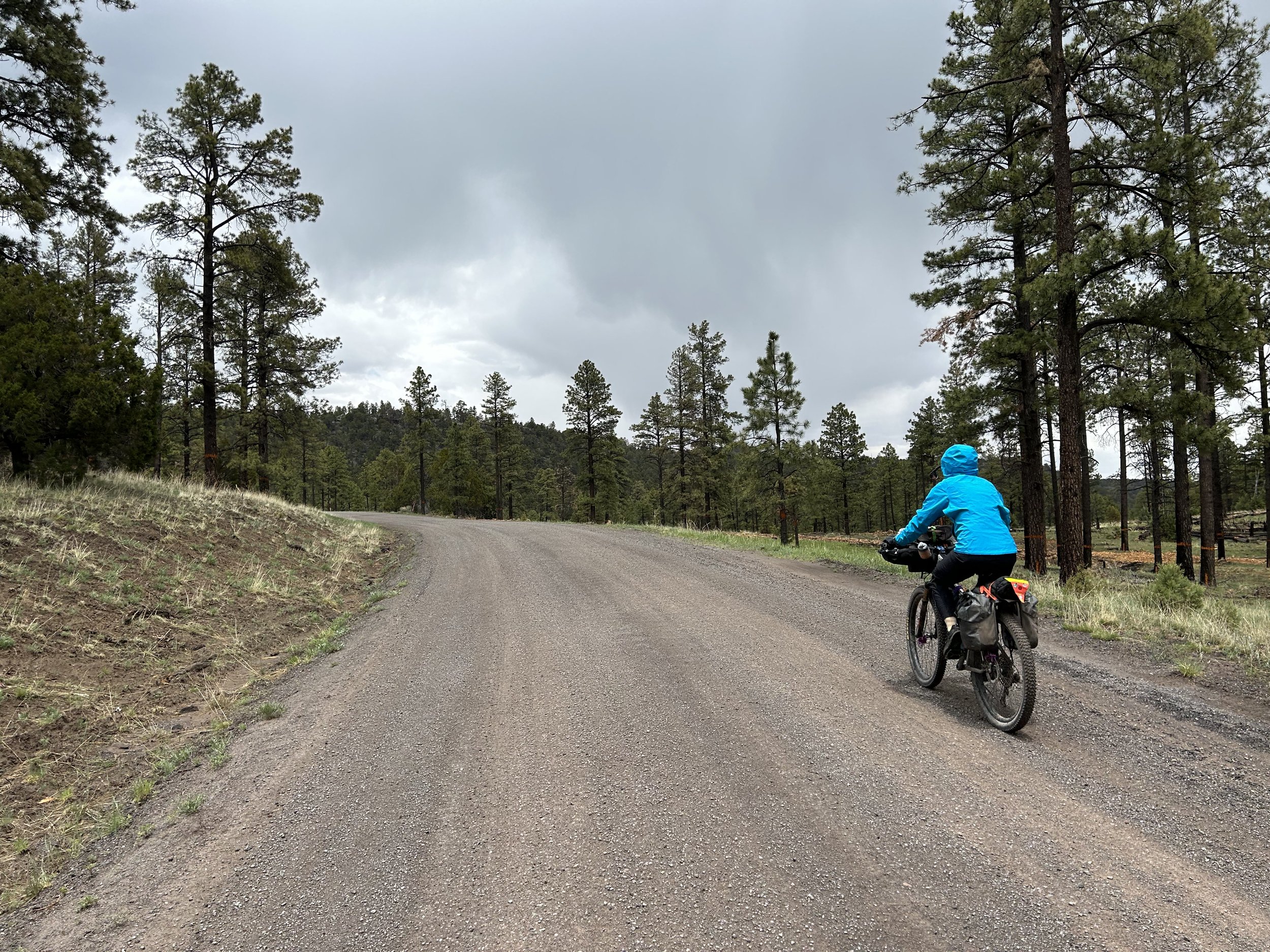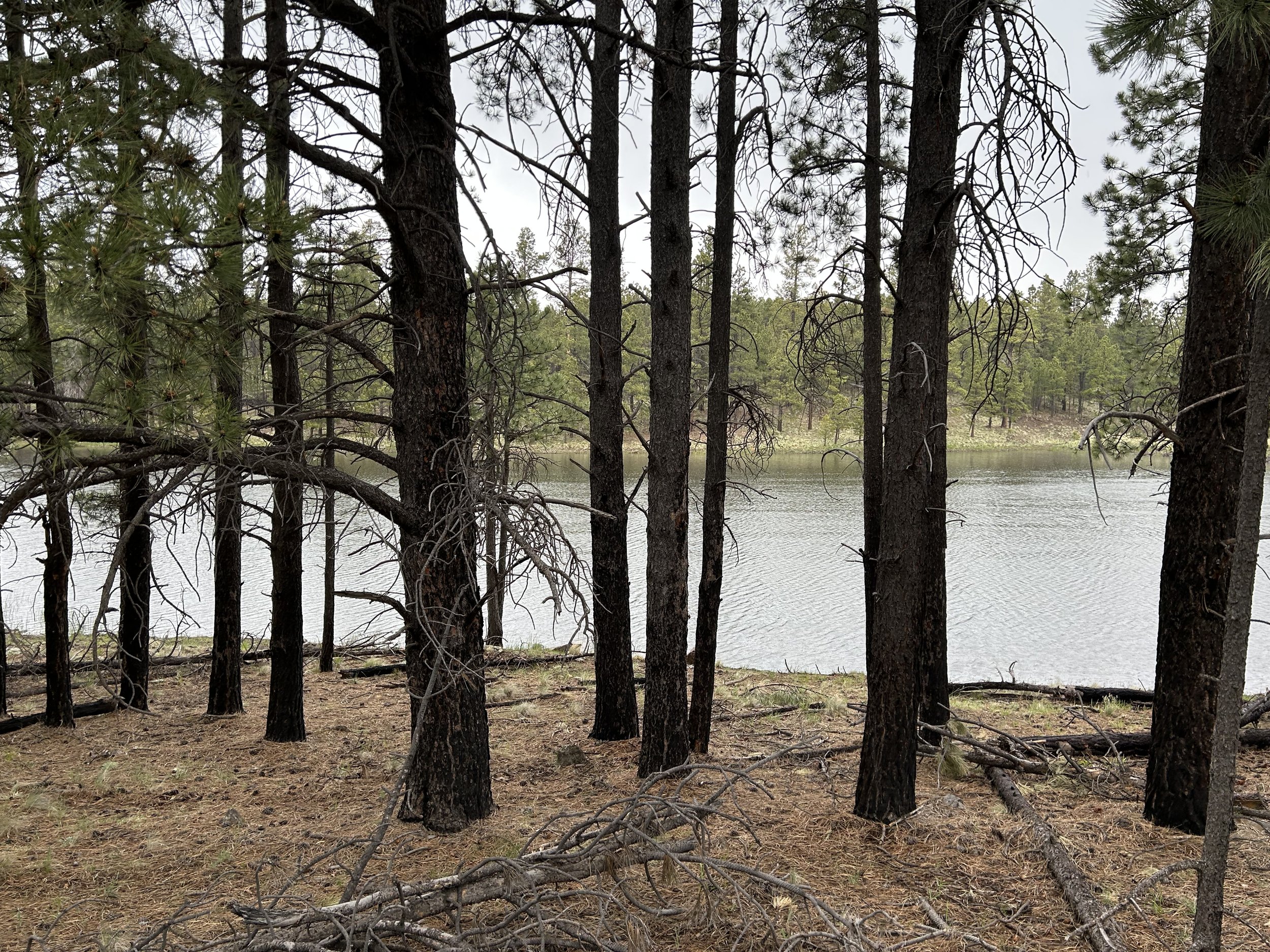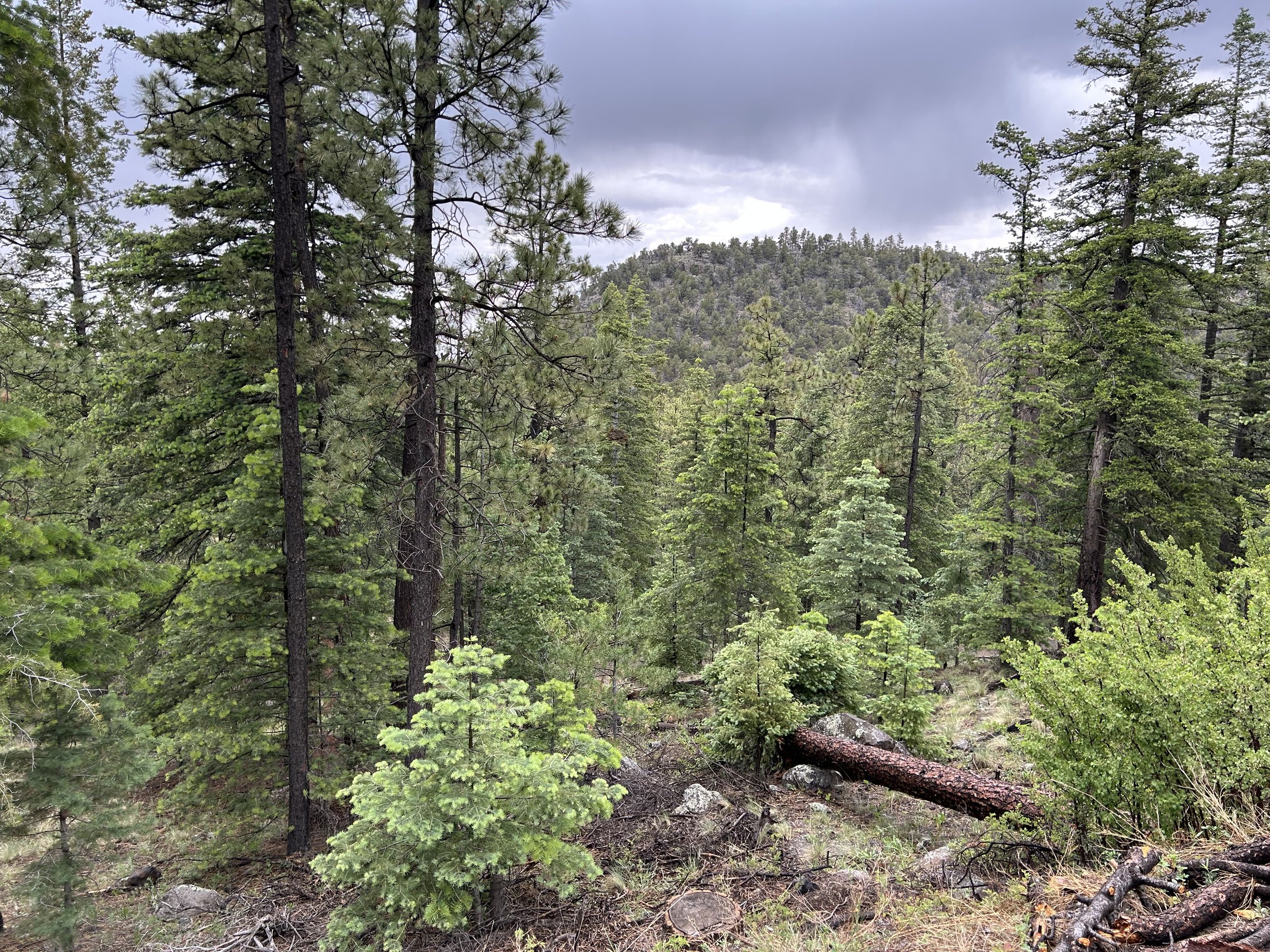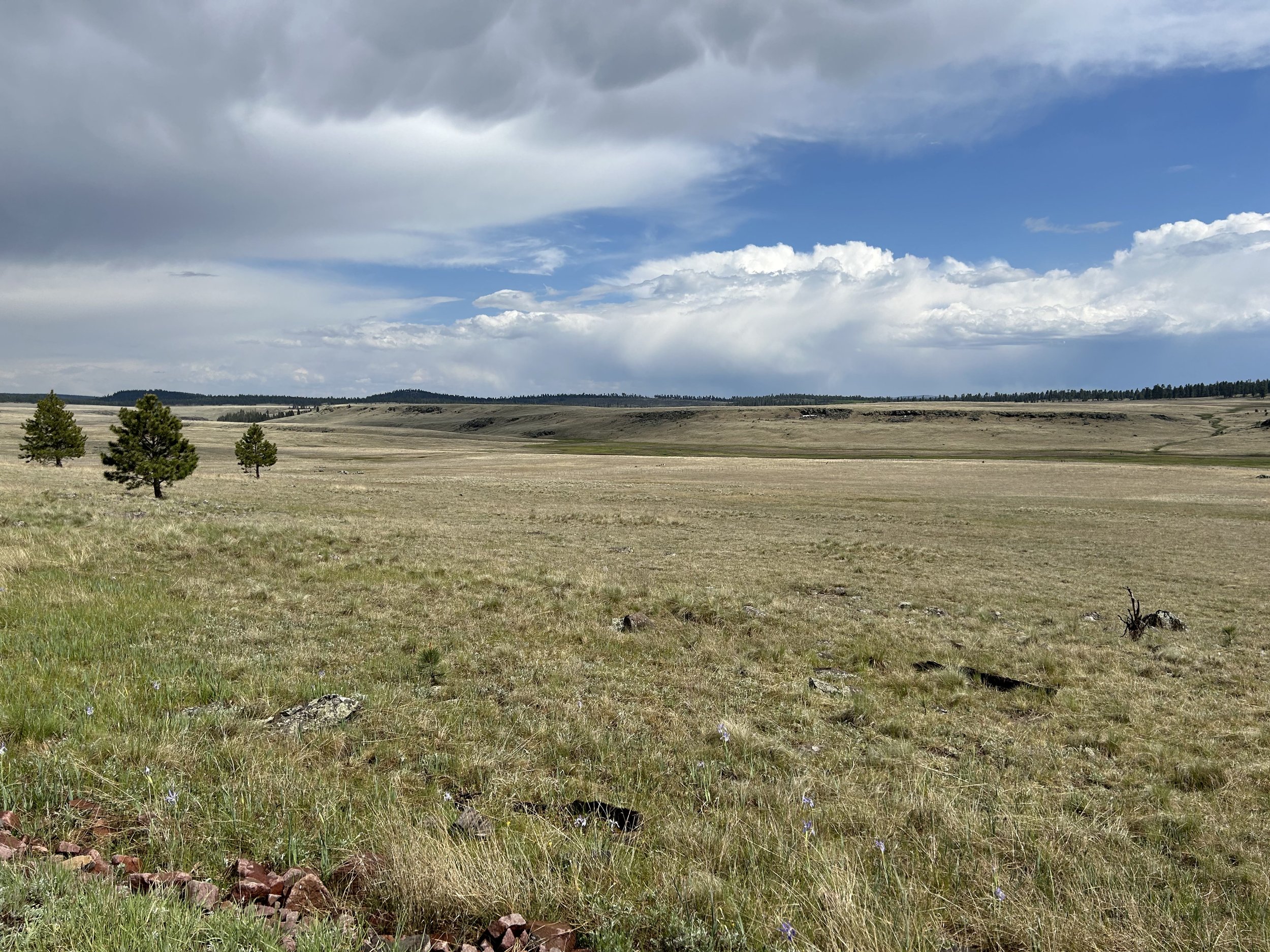El Lobo Lupus - Day 4 - Rain and Storms on the High Grasslands
Date: June 3, 2023
43.28 Miles
3,754 Feet of Gain
Springerville, AZ to near Williams Valley/Three Forks, AZ
Janna and I woke up early to depart today. We knew we had some big climbs ahead of us, and that the storms that brewed yesterday would only intensify and rage today given the forecast. We wanted to ride early to (a) get to higher elevation before it rained lest the silty high-desert roads turn to peanut butter mud, and (b) we were hoping to make another big crossing of exposed high altitude meadow/grasslands (over 9000 feet) before thunderheads became a safety concern. Luckily, the storms were predicted to hit no earlier than mid-afternoon which should have provided us plenty of time.
We packed up our bags and made to move at dawn from Springerville. With the sun gaping over the horizon, the heat was already spilling over the land. We rode out of town along neighborhood roads that took us by some metal sculptures of cheetahs and horses. We soon regained the highway shoulder and kept as far right as possible. Semis and morning vehicles passed us in groups. One of the big highways portions of the route approached as we climbed up the pavement on a near-non-existent shoulder right next to guardrails. Luckily, there was a passing lane on the notable hill, and all vehicles gave us plenty of space by moving on over. No sooner had we crested the steep climb then we made our immediate turn onto gravel towards Sipe White Mountain Wildlife Area.
We were on a flat, broad roof of a mesa covered in whipping yellow grass and minutely cooler in temperature than Springerville down below. The first truly expansive views of Escudilla Mountain really opened up. That mountain was cloaked in neon green, visible even from a distance, from the rapid aspen growth that had been going on ever since the Wallow Fire. The range is a prominent feature of the landscape here - the third largest mountain in Arizona at 10,916 feet. Home to El Lobo, deer, elk, and historically the refuge for the last Arizonan grizzly bear killed in the early 1900s. It's where Aldo Leopold served as a fire lookout, and where his land ethic was kindled by the killing of one of those Mexican gray wolves. We gazed in awe at the hunk of mountain standing so starkly from the surrounding topography. I looked back at where we came and saw nothing but an arrow-straight dirt road carving into the distance. Ahead, notable clumps of cumulus were gathering even at this hour of the morning.
The atmospheric instability galvanized me to press forward with greater urgency because it seemed that rain would hit now in the morning, and not in the afternoon as the forecast indicated. Even so, the climbing cumulus were simply beautiful and texturizing against the golden-yellow landscape. Janna and I crossed a cattleguard that moved us from National Forest Land to Site White Mountain Wildlife Area country. Thickets of juniper closed in and we sped down a smooth gravel wind to plains below all underneath that blue sky quickening with cloud. Janna and I saw a turn-off to the Visitor Center, so we rode over to it. It was gorgeously shaded with massive mature trees. Abundant cool green grass and a number of picnic tables sat around a historical home-turned-visitor center. The place's caretakers came out to greet us. They told us the history of the ranch, the people who saved it from the approaching flames of the Wallow Fire in 2011, and how it now functioned as both an educational outpost and base for researchers studying the wildlife and vegetation of the White Mountains. The two of us went inside the Visitor Center which was so well done. There were tons of historical photos, recent science updates, and cultural exhibits. The bathrooms were super nice, and the water spigot outside reliable. The caretakers took all my questions and encouraged me to put the place on the route - I happily agreed.
Though we had only stayed for 20 minutes, by the time we rolled out from under the protective branches of the trees, Janna and I surveyed the sky behind us to find a roiling gray mass and curtain of rain coming our way. We moved fast across smooth, but clay/silt-born roads in an attempt to climb upwards into the ponderosas that held more water-friendly soils. The clouds just exponentially grew, the temperature dropped, a downdraft came singing for us as a headwind, and splotches of droplets began to fall. Right before the real rain looked to be slamming us, we spied an old wooden cabin nestled in the pinyon/junipers. We rode over to it, peaked inside (didn't go further because of rodent droppings/hantavirus), put on rain gear, and then found an adjoining dense stand of trees to stand in. Wind whipped fast bring horizontal rain only seconds later. We huddled, fairly well protected, cold now despite this morning's heat. Janna and I ate snacks as the worst of the rain blew by. Now at a sputtering drizzle, we jumped back on our bikes and started climbing up into the woods in earnest. Luckily the soil surface changed, and our fears of death mud went away as well. The clouds stayed low which really helped with the heat. I spied a pipe spring flowing into a trough off to my right and went to investigate. I noted it as a water source on the route and we pushed up to the top of the climb where an old wooden kiosk outlined National Forest regulations. It also held plenty of signs about bears and the first signs of the trip about el Lobo in the area.
We pulled away from the kiosk and stared downhill into entry of first major burn scar we would ride of the Wallow Fire. Molten gray skies cast pallor and darkness ahead as another building storm rained down on distant peaks. The rain's dark sweep against the foreground of burnt trees made the scenery and plunge downhill even more wild looking. We rode through the burn area, grateful for the copious cloud cover keep the temperatures cooler in what would be an exposed area. Small creeks gushed by and under the road through culverts. We started up a climb, turned a switchback, and entered unburned timber once more. The road was in excellent gravel condition so the miles came easy. At noon, we pulled off under a grove of pines to eat lunch. A massive thunderhead started sending off lightning right over us, so we got into lightning position and waited for the storm to pass. Once the thunderclaps receded, we put on rain gear just as a torrential downpour started. Janna and I kept pedaling to keep ourselves warm as we continued up a climb that just kept gaining in steepness. After sticking to the Forest Road as is passed through a private church camp, we turned and started up an even steeper slope where spruce, aspen, and firs popped up in dense groves. We hopped off our bikes and hiked-a-bike up and up. The rain stopped, so I stripped off my gear as sweat poured down my back. I stared off to the north and got glimpses of the Springerville Volcanic Field. It seemed unreal that we started off down there this morning.
The climb continued up and adjacent to a filled reservoir. Again, storm clouds roiled overhead. Aspen groves thickened around us as we arched a saddle and hit the treeline leading to a sprawl of subalpine meadows ahead. Low-slung leaking clouds dripped gray tendrils to Earth. We hesitated at the boundary between tree-cover and exposed grassland just in case lightning erupted. None did, so we kicked into high gear to cover ground quickly. The temperatures were cold and snow banks sat on sloping faces of meadow hills. The water from their melt fed high-altitude ponds and lakes. And then suddenly the rain unleashed. A flush of water came down on us. With nowhere to shelter we just kept pushing to get the next treeline wherever that was. The rain turned to a drizzling patter. I stopped to swivel my head all around as we sat under an umbrella of gray rain while the distant peaks around us were under blue/cumulus. We kept moving, crossed into a treeline, and stopped to try to eat some snacks to get our core temperatures up. But the wind picked up right then, so we pressed on. Again into exposed meadows with wind/rain, and again into a treeline as our brakes squealed from grit and wet. I was super cold at this point, shivering intensely. We descended a tree-chocked woodland and the rain finally began to lessen. Suddenly, the sun was on us. I stopped to stand in it and finally get some serious food into my body.
As the afternoon continued forward, we found ourselves turning onto a road that took us alongside a swath of meadows. The swirling clouds issuing from the storm pulled gray virga to Earth before pushing out and away from us. Our track turned to red dirt and cinder once more. The vermillion sluice approached and then paralleled a series of marshy lakes where waterfowl called out in dense numbers. With the blue sky arching overhead, the afternoon felt warm, secure, and everything was rapidly drying. We flew down a long descent paralleling a drainage from the lakes that was rich with plant growth. We turned one last time onto a dirt road that wove through grasslands with the distant storms puffing over the treelines. I could tell we were getting closer to pavement because a number of RVs and overlanders camping in the trees began to pop up. We crossed over a series of creeks and tumbled out onto the main pavement connecting Big Lake to Alpine. After a short ride up the road, we turned right onto dirt and started a sudden climb up. Before long we spied a side road that I bet led to a great campsite. I was on the spot with a secluded, elevated, yet protected campsite found back in the pines. We circled up and started drying out everything after our wet ride from the day.












